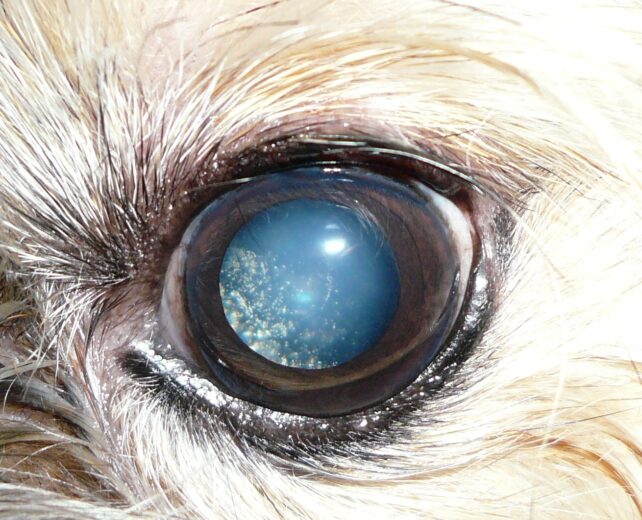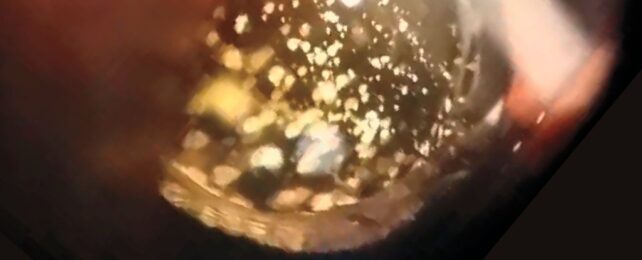A relatively common condition can turn someone's gaze into a galaxy, making the eye appear to contain a starry night sky.
People who experience the benign change don't actually have celestial bodies swimming in their vision. But anyone looking into their eyes will see tiny flecks of light bursting against a dark background.
The age-related condition is called asteroid hyalosis (AH), and no one knows why it occurs in only some individuals, let alone what it says about a person's overall health.
Age seems to be a risk factor, but the condition and its correlations to other health issues are not well studied. Estimates from various studies suggest AH impacts roughly 1 to 2 in every 100 people. It also occurs in dogs.
The condition itself rarely causes vision issues (although it can make diagnosing other eye conditions difficult) and typically comes on gradually. Many people have no idea they even have it. Often, the only thing that changes is the appearance of the eye to others.
In 2018, for instance, a 54-year-old woman with diabetes, who went for a routine eye examination, was found with a textbook case of AH in her left eye, as can be seen below. She didn't realize it was there.
These starry fragments are a buildup of material, often calcium, in the vitreous, or gel-like fluid of the eye. This fluid makes up the bulk of the eye structure, and it sits between the retina, at the back, and the lens, at the front.
With age, the vitreous can accumulate debris from infection, inflammation, and hemorrhage, causing floaters, which can appear like dark, squiggly spots in a person's vision.
Other types of debris are invisible to the eyes of the beholder but look like "sparkling opacities" to those on the 'outside' looking in. Under direct lighting, these asteroid bodies are "cream-white". But using an ophthalmoscope, a device that allows clinicians to peer inside the eye, the material glitters like gold.

It's unclear if AH is tied to other health conditions. Observational studies have produced mixed results. The condition seems to occur without inflammation, and some experts think it is tied to blood vessel issues or cellular recycling problems.
"There is ongoing debate," researchers wrote in a 2023 review," whether [asteroid hyalosis] shares similar degenerative and microvascular mechanisms with metabolic dysfunction and coronary artery disease given commonly identified shared risk factors of age, hypertension, diabetes, and male sex."
"AH may in fact represent a final common pathway for multiple clinical conditions and risk factors," they surmised.

In recent years, scientists have peered into people's eyes to try to find markers of rapid aging, mental decline preceding Alzheimer's disease, or early mortality. Our eyes are the only external part of our nervous system, so they could reveal what's going on inside. In 2022, for instance, a machine learning model figured out how to predict a person's years of life with relative accuracy simply by looking at their retina.
Whether or not AH can be used to predict similar health outcomes remains to be seen. Our current understanding of AH is mostly based on anecdotal evidence or clinical experience. Large, randomized clinical trials are needed to understand AH better, especially on the rare occasion it does cause symptoms.
